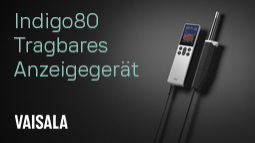From R&D to high production volumes: Bosch presents the new Manesty TPR tablet press range
Higher yields and flexible design
- TPR 200 and 700 add to TPR 500 for new range of tablet presses for small to high production volumes
- Designed to maximize Overall Equipment Effectiveness (OEE)
- Patented integrated die plate improves output by up to 40 percent
At Achema 2015, Bosch Packaging Technology showcases the new range of Manesty TPR tablet presses. Following the introduction of the versatile TPR 500 at last year´s Interpack in Germany, Bosch has now added the TPR 200 for small to medium batches and the TPR 700 for high production volumes to its line-up. Designed to improve Overall Equipment Effectiveness (OEE), all three machines offer an integrated die option, modular powder feeding system and an easy-to-operate Human Machine Interface (HMI). “The successful launch of the TPR 500 confirms that the new range offers exactly what pharmaceutical manufacturers require,” says John Murphy, product manager at Bosch Packaging Technology Ltd. in Knowsley, UK. “Based on their feedback, we have now developed two further models to meet the industry’s demands for high yields as well as flexible and efficient production.”
Three machines for different batch sizes
The TPR 500, which was launched at Interpack 2014 in Dusseldorf, Germany, can produce more than 400,000 tablets per hour, using standard tooling on a small footprint. It is particularly suited for MUPS (multiple unit pellet system) products without any additional equipment. “This also demonstrates Bosch’s line competence, as the pellets can be made on a Hüttlin system and then either enclosed in capsules or pressed as tablets,” Murphy explains.
The new TPR 200 is designed for small to medium batches with outputs of up to 230,000 tablets per hour. “With the TPR 200, we offer customers an economic machine with a hygienic easy-to-clean design and compact footprint,” Murphy says. “Its modular data acquisition system makes it the ideal platform for the development and evaluation of tableting formulations.” Its flexible design includes options for R&D configuration, containment applications, as well as bi-layer tablets. The latter is also available on the new double-sided TPR 700. Both tablet presses can be quickly converted into a bi-layer version that ensures a clear demarcation between the different tablet layers, thus avoiding cross-contamination.
As the largest tablet press of the series, the TPR 700 is capable of producing more than one million tablets per hour. It is suited for a wide range of compressible products including non-pharmaceutical materials such as vitamins. The length of the feeding system provides excellent weight consistency at high speeds. Due to its ergonomic design, both production and technical areas of the tablet press are easily accessible. Moreover, a unique two-level production zone ensures the complete segregation of production and technical areas even when removing the exchangeable turret.
High output and outstanding flexibility
All three tablet presses have been developed to significantly improve OEE in terms of availability, quality and output. Combined with an exchangeable turret, the patented integrated die plate offers increased flexibility, fast, safe and easy changeover, as well as reduced cleaning times. “Depending on the machine model and type of tablets, output capacities are improved by up to 40 percent,” explains Murphy. Furthermore, the „True Flow“ tablet discharge chute eliminates product damage by reducing mechanical stress with an optimized take-off angle for a smooth tablet delivery.
The TPR range also features an extendable powder feeding system, which offers higher flexibility and production efficiency. The ergonomically designed two-paddle feeder can easily be upgraded to three paddles. The simple, precise and repeatable feeder set-up contributes to efficient production. A choice of rectangular or round paddle blades increases the range of materials that can be compressed.
Efficient and easy operation
The TPR range is easy to operate with a 21-inch HMI touchscreen and Windows 7 as the standard application system. Latest off-the-shelf Beckhoff controls ensure efficient operation as well as simple machine set-up. As part of a total productive maintenance plan, the latest wireless RFID (Radio Frequency Identification Device) technology enables operator log-in and identification at any time, thus significantly reducing the risk of operator errors.
Bosch’s technologies are on display at Achema in Frankfurt/Main, Germany, from June 15 to 19, hall 3.1, booth C71.
Syntegon Technology
71332 Waiblingen
Germany










